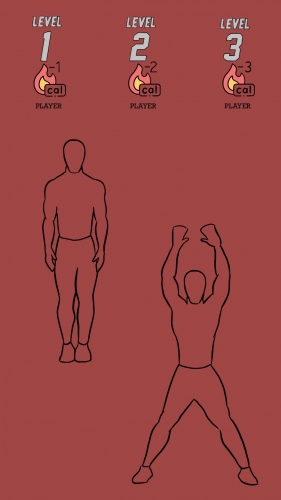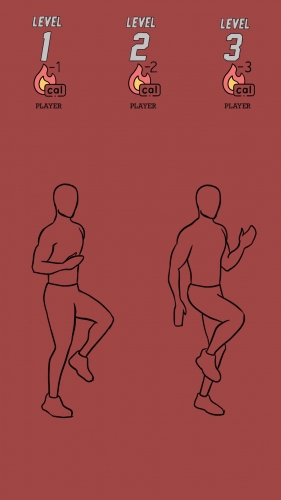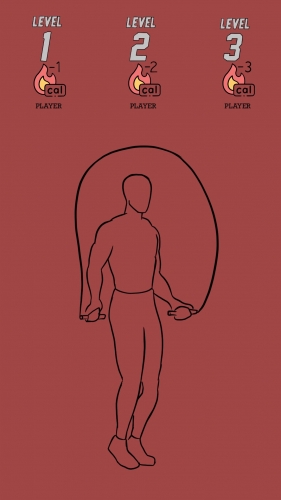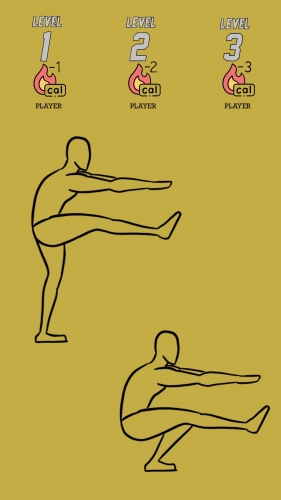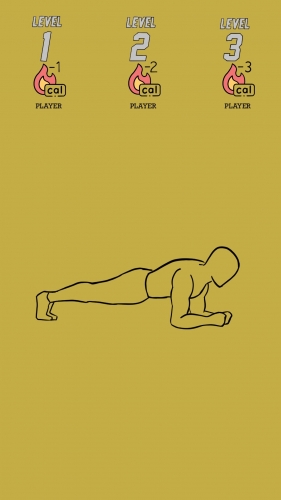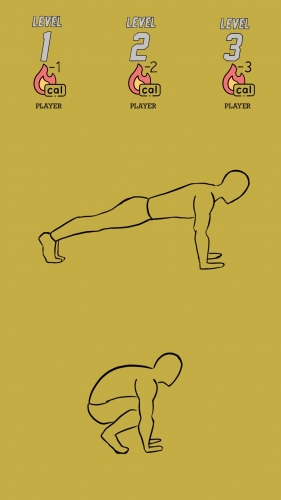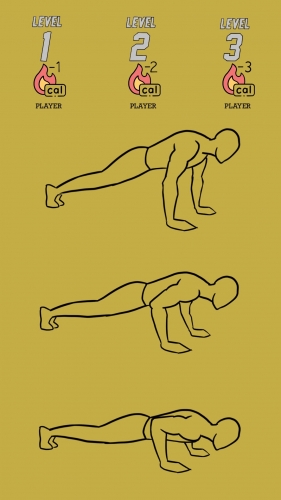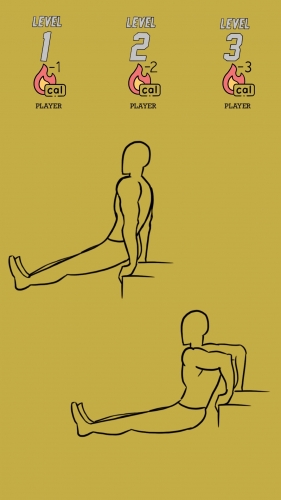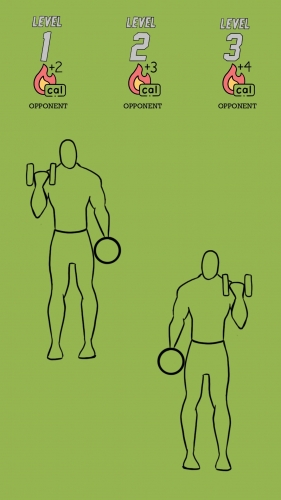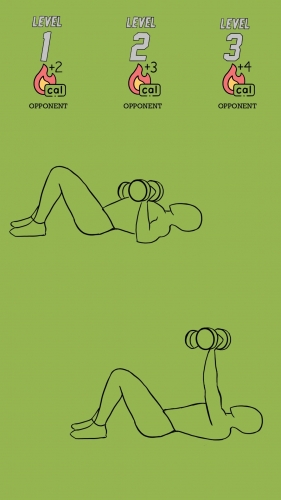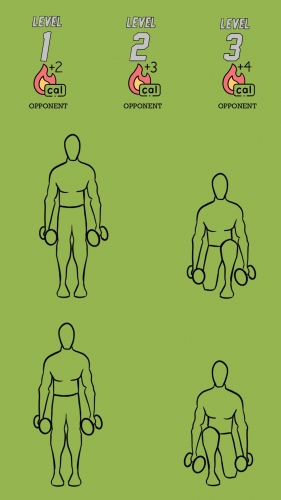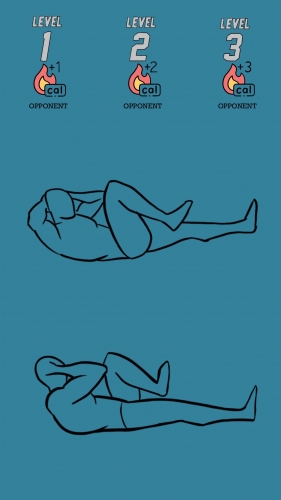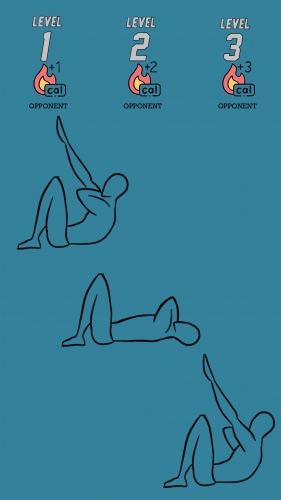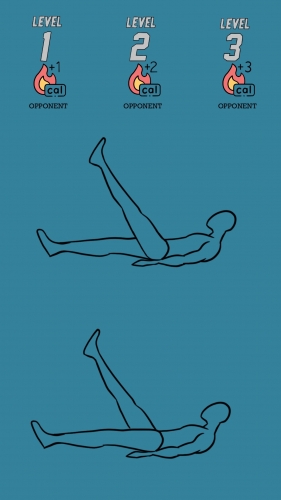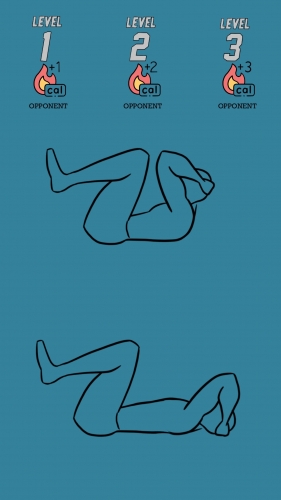
This is the submission for APD Week 8 Play + Body
PLAY AND BODY (Deck of Workouts)
Card Game (2+ Players)
NOTE: This week's submission was done as a collaboration with Oneed Nauman.
Components:
Each Game Box contains:
- (Number) Red “Cardio” Cards
- (Number) Blue “Functional” Cards
- (Number) Yellow “Calisthenics” Cards
- (Number) Green “Weight Training” Cards
- (Number) Grey “Stretch” Cards
- (Number) Calorie tracking cards with (Number) Calorie Tracker Tokens
How to Start:
Start by separating the Stretch cards from the rest of the deck, then shuffling the deck until the cards are distributed equally.
Give each player a Calorie Tracking Card and place a Calorie Tracker Token on the circle marked “10”.
Deal 5 cards to each player. The youngest player gets the first turn.
How to Play:
THE TURN
Players take turns by going clockwise around the circle. Each turn is made up of four phases.
DRAW PHASE: DRAW 1 card from the deck and add it to your hand.
WORKOUT PHASE: Play a card from your hand and then perform the workout shown on the card.
CALORIE COUNT PHASE: After successfully completing the workout, make amends to your calorie tracker based on the workout performed.
END OF TURN PHASE: DISCARD until the number of cards in your hand does not exceed the hand limit. The hand limit is 5 cards (unless otherwise stated.)
The Cards:
Cardio cards contain cardio exercises like knee raises, jumping jacks, skipping and so on. These cards serve to decrease your Calorie Count based on what level you play them at.
Functional cards contain exercises like spider walks, farmer’s walks, crunches and so on. These cards also decrease your Calorie Count based on the level you play them at.
Calisthenics cards contain exercises like body weight push ups, piston squats, triceps dips and so on. These cards add to the other player’s Calorie Count based on the level you play them at.
Weight Training cards contain exercises involving weights, like bicep curls, chest presses, weighted squats and so on. These cards add to the other player’s Calorie Count based on the level you play them at. Weight Training cards can ONLY be played if you’ve played a Calisthenics card in the previous turn.
Stretch contain stretching exercises. They are very limited cards that can be played during your opponent’s turn. When a Stretch card is played, the player must perform the stretch outlined along with the opponent. Player then re-draws a card to get an exercise.
Card Levels:
Each card can be played at three different levels.
|
Level 1 |
Level 2 |
Level 3 |
|
|
Cardio |
-1 Calorie Point for Player |
-2 Calorie Point for Player |
-3 Calorie Point for Player |
|
Functional |
-1 Calorie Point for Player |
-2 Calorie Point for Player |
-3 Calorie Point for Player |
|
Calisthenics |
+1 Calorie Point for Opponent |
+2 Calorie Point for Opponent |
+3 Calorie Point for Opponent |
|
Weight Training |
+2 Calorie Point for Opponent |
+3 Calorie Point for Opponent |
+4 Calorie Point for Opponent |
In order to play a card at a higher level, the player MUST have played the same card in the previous turn. Playing a card at a higher level will increase the number of repetitions for the exercise but will also either burn more calories from your Calorie Count or increase more calories for your opponent’s Calorie Count.
In order to play a Weight Training card, the player MUST HAVE played a Calisthenics card in the previous turn.
Win Conditions:
Players have a turn limit of 12 turns each, within which they can win if they are the first to decrease their Calorie Count to 0. If the turn limit is reached, the player with the least number of Calorie Points wins.
Rationale:
For the theme of Play and Body, Priyankar and Oneeb wanted to create something that helped motivate people to engage in exercise more. Due to the pandemic, most people have been confined to their homes, with gyms closed. This had made it harder for a lot of people who already struggle with motivating themselves to go to the gym or sticking with an exercise routine. Working out at home is especially challenging, and through this week’s theme, we wanted to create a “gamified” solution for this problem, something that won’t replace workouts at the gym, but can help people ease into the mindset of working out, maintaining their fitness, and introducing play into an otherwise mundane activity.
“You can’t tell a kid that it’s time to exercise; that’s a turn off…you have to say, ‘Let’s go to the park and have fun’. Then you het them to do some running, play on the swings, practice on the balance beam, basically get a full workout disguised as play.” – Arnold Schwarzenegger
While this is not particularly for kids, it is using that same basic idea of disguising a full workout in the form of play. This should help motivate them to pursue and maintain a more active lifestyle. There are many solutions to fitness, but none regarding weight training with play, and we wanted to address that in this response.
Context:
A big point of reference for this was the Nintendo Switch Game, Ring Fit Adventure. Ring Fit Adventure is a fitness game designed as a role-playing game and progressing through the game involves performing various exercises. It’s a fun way to stay active, and to try and get in shape at home. Most other examples are VR-based projects, and unfortunately, they’re not very accessible to the vast majority of people as they require VR headsets and specialised equipment. The XBOX Kinect was also something that influenced this response, as it captures motion data from the user’s body, turning the player themselves into a controller. While all these are great options, all of them require you to have some sort of console. We didn’t want to the idea of play with exercises to be limited by consoles. Almost all the options offered through these mediums are focused on active, physical play, but none of the ones we found are geared towards gamifying actual exercises.
Method:
At first, we discussed making this a VR game of sorts, where the exercises were depicted as “carnival games”, where the participants could perform the games using motions used in weight training exercises (with weights). We then realised that creating something like this was beyond our expertise, so we looked towards things we could do, such as boardgames. While we liked the idea, we couldn’t think of a way to incentivise the players to complete the game, as we were approaching it from a non-competitive angle
Keeping in mind that we wanted to find a way to keep this game ‘console or platform free’, it was then that Oneeb came across the game Unstable Unicorns, which gave us the idea top turn this into a card game. We worked on how the game could be broken down into sections of exercises with different point systems and how it could be played as a multiplayer or single player game. Priyankar then segregated the required exercises for each segment and made illustrations (prototypes) for each type of card to show what they could look like. Assets were made for the point system (calories), levels, opponent, player, and exercises. Priyankar made sure the designs are minimalistic in nature as we noticed that people usually want simple, clear instructions that give all the information during a workout, rather than something with a lot of text, as their mind and body are both pre-occupied and tired.
Response/Reflection:
Overall, we believe we were successful at bringing play and body together to find a playful way to introduce and sustain exercising and making that into a habit for people who find it difficult or boring to do home exercises. It is a playable card game that is a decent attempt at addressing our inquiry. Although it is far from fully developed, it can serve as the seed for a much better-informed research project into the topic of exercising with play, especially weight training.
The game explores constructive play as it is more goal oriented and thoughtful. There will be some strategy involved to beat your opponent. It also explores paidia play as there are predefined rules and goals but have varying levels of structure as a card game for single or multi-player.
There are also multiple directions that this project can be taken in if more serious development is considered – one of which could be expanding this into a VR project to assist with physical rehabilitation. Rehabilitation can be painful and frustrating, and having a project or “game” that allows patients to delve into a Virtual environment, where their rehabilitation exercises are portrayed as fun carnival games. However, in order to develop the idea in this direction, collaboration with experts in the field (doctors and physicians) would be extremely important, as without their expertise and input, such a project cannot be realised.
About This Work
By Priyankar Ray
Email Priyankar Ray
Published On: 10/10/2021
